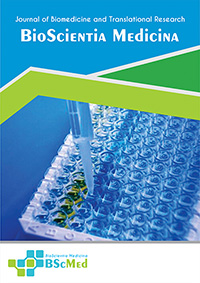Main Article Content
Abstract
Background: Gastric duplication (GD) is a rare congenital anomaly, representing 2–9% of all gastrointestinal duplications. These embryologic abnormalities are typically managed by complete surgical resection due to the risk of complications, including malignancy. However, this standard approach becomes perilous when the duplication cyst is intimately adherent to vital organs. We present a case where a large gastric duplication cyst was inseparable from the pancreas, necessitating a deviation from standard management.
Case presentation: An 8-month-old female infant presented with a four-month history of non-bilious vomiting and progressive abdominal distension. A palpable, cystic, 8x5 cm mass was identified in the left upper abdomen. Abdominal ultrasound revealed a loculated, septated cystic lesion, and a barium study demonstrated a significant filling defect on the greater curvature of the stomach. Initial management was delayed as the family sought alternative medicine. Surgical exploration revealed a large gastric duplication cyst arising from the greater curvature, which was found to be densely adherent to the body and tail of the pancreas. To avoid catastrophic pancreatic injury, a complete resection was abandoned in favor of a pancreas-sparing mucosectomy. The entire mucosal lining of the duplication was excised, and the shared muscular wall was preserved and repaired. Postoperatively, the patient had a transient ileus but recovered well, with complete resolution of symptoms. At an 11-day follow-up, she was thriving, feeding well, and had gained significant weight. Histopathology confirmed a benign gastric duplication cyst.
Conclusion: This case highlights that for complex gastric duplication cysts where resection would endanger vital structures, complete mucosal excision is a safe, effective, and organ-preserving surgical alternative. This technique successfully mitigates the risks of both the untreated anomaly and iatrogenic surgical complications, underscoring the importance of surgical judgment and adaptability in managing rare congenital anomalies.
Keywords
Article Details
As our aim is to disseminate original research article, hence the publishing right is a necessary one. The publishing right is needed in order to reach the agreement between the author and publisher. As the journal is fully open access, the authors will sign an exclusive license agreement.
The authors have the right to:
- Share their article in the same ways permitted to third parties under the relevant user license.
- Retain copyright, patent, trademark and other intellectual property rights including research data.
- Proper attribution and credit for the published work.
For the open access article, the publisher is granted to the following right.
- The non-exclusive right to publish the article and grant right to others.
- For the published article, the publisher applied for the Creative Commons Attribution-NonCommercial-ShareAlike 4.0 International License.





